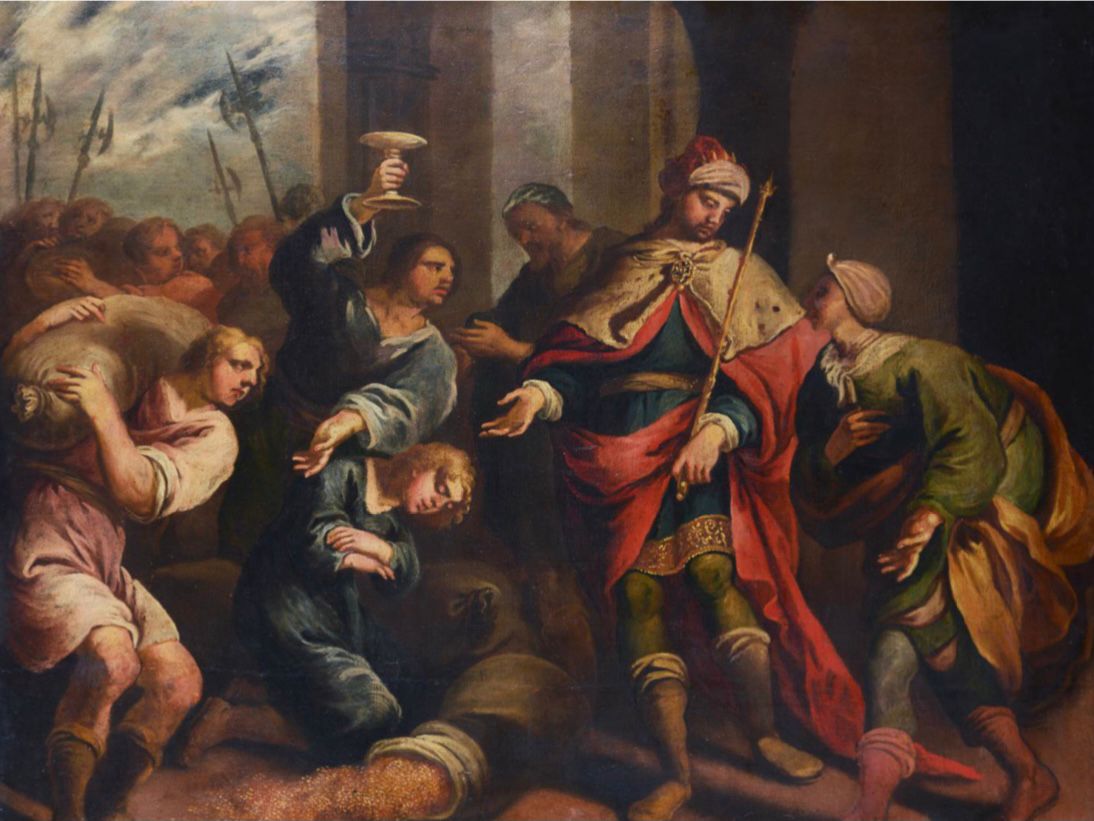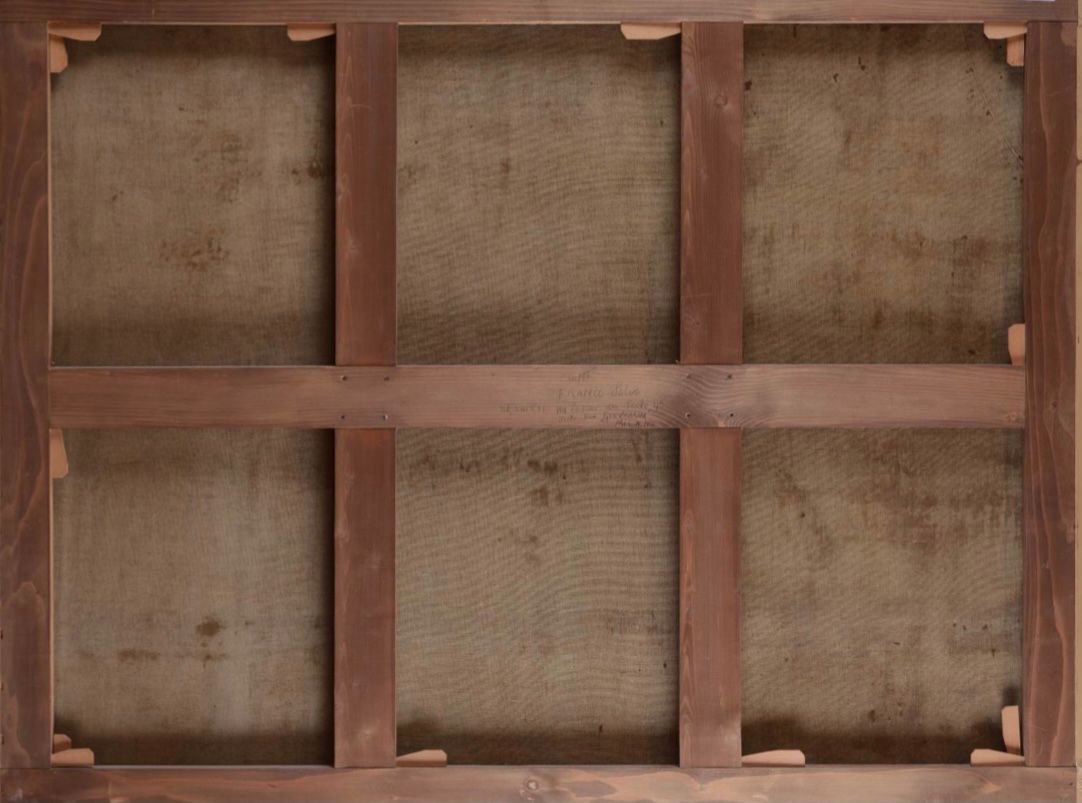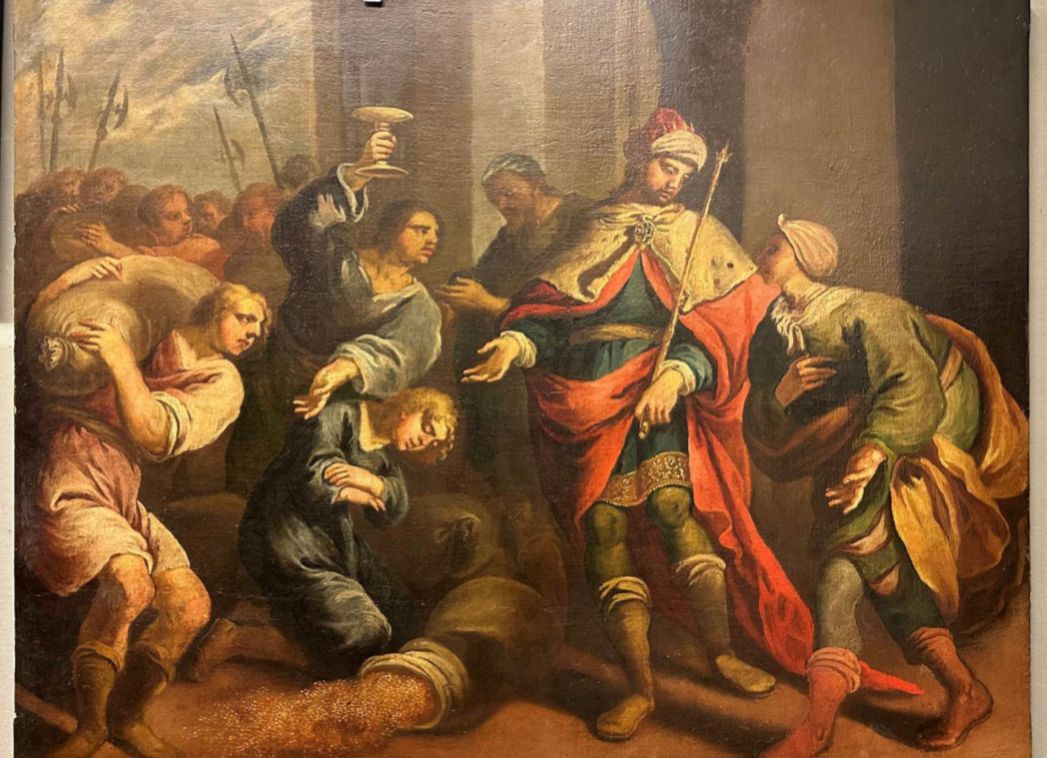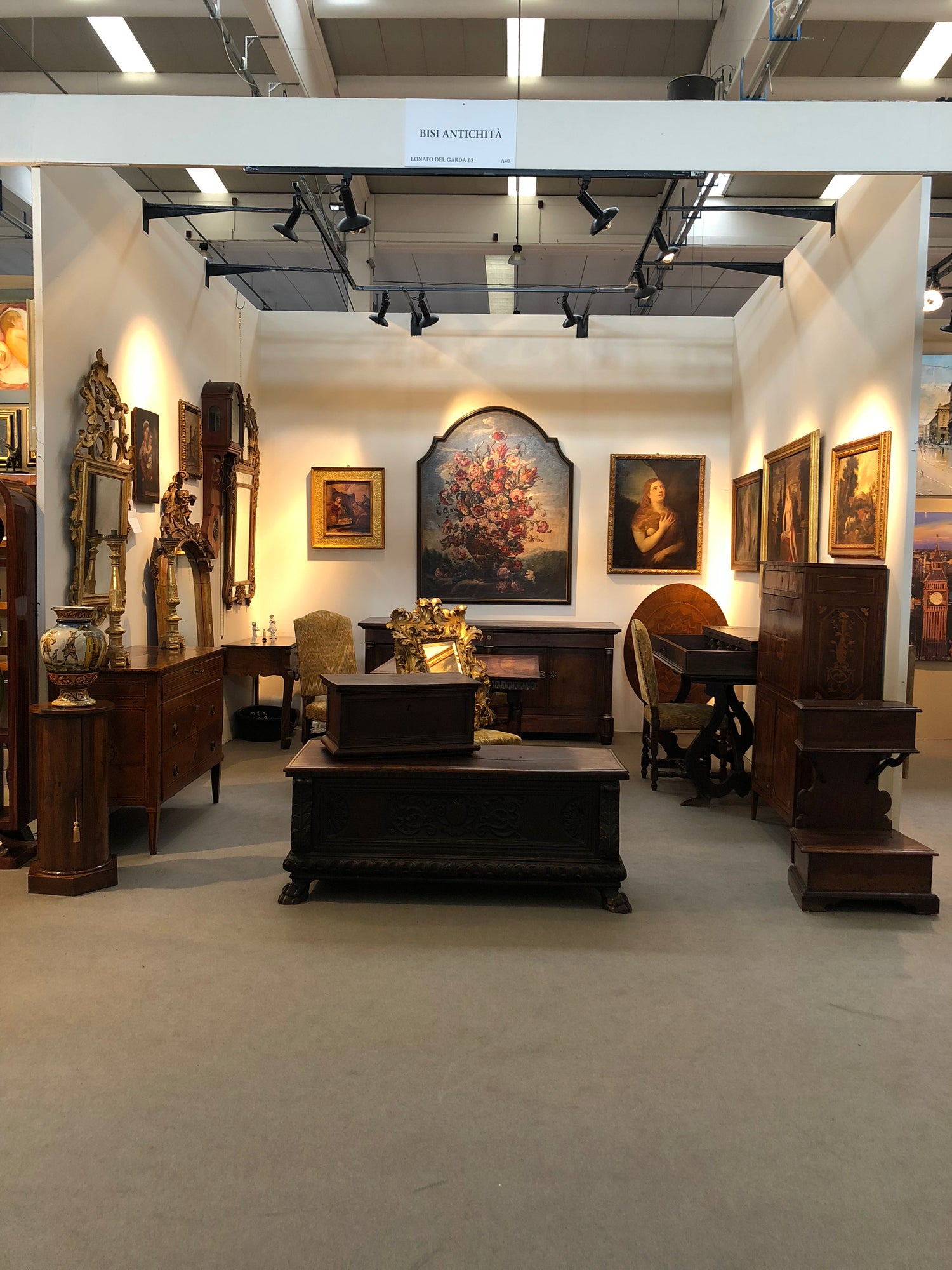Oil on canvas. The riches of Solomon
Oil on canvas. The riches of Solomon
Author: Paris Bordon (circle of, Treviso 1500-Venice 1571)
Technique and dimensions: oil on canvas 150 x 122
The painting we present has as its subject a well-known Old Testament theme: the wealth of King Solomon (1 Kings 10:14-29).
In his representation it is possible to grasp a mix and a synthesis of Giorgionesque, Titian chromatism and Mannerism of the Fontainebleau school, elements all present and recognizable in the work of the Venetian painter Paris Paschalinus Bordon, known as Paride Bordone (Treviso 1500-Venice 1571), back in the limelight of the news and the object of recent appreciation and rediscovery thanks to the exhibition that his hometown, Treviso, wanted to dedicate to him in the location of the Santa Caterina Museum until 15 January 2023: forty-one works, which in eight thematic sections document Bordon's artistic path attesting to his interest in portraiture and mythology, his inventions until reaching the creative maturity superlatively attested in devotional subjects and altarpieces.
The primary source of historical and literary documentation on our artist remains Vasari (followed and supported by Pietro Aretino, Giovanni Battista Cavalcaselle, Luigi Lenzi, Carlo Ridolfi) who, as a guest of Bordon in Venice in 1556, had the opportunity to learn about his life and artistic career: a sort of "enfant prodige" marked by success, at just 13 years old, in the workshop of the great Titian.
It is no coincidence that the Venetian writer Marco Boschini without hesitation described Bordon as “divin pitor”, an epithet until then reserved exclusively for Raphael and Titian.
It was precisely the fame he acquired within Titian's workshop that soon allowed Bordon to secure official and private commissions in Venice, among which stands out the masterpiece "The Delivery of the Ring to the Doge", executed for the Scuola Grande di San Marco, currently kept in the Galleria dell'Accademia in Florence.
The series of commissions continued and marked Bordon's rapid success in the hinterland (it is worth mentioning the cycle of frescoes in the church of San Simone and Giuda Taddeo in Vallada Agordina), in Lombardy, in Germany (Függer Palace in Augsburg) until the subsequent invitation by Francis I to the court of Fontainebleau (1538), a real turning point, thanks to which Bordon had the opportunity to translate and introduce into the polysemantic language of his own style all the suggestions of the Mannerist imprinting, from which, until his death in 1571, he would never separate himself: critics underline a gradual maturation that occurred in this sense above all through a perceptible proximity, starting from the 1550s, to the French taste of A. Caron (see the “Combattimento dei gladiatori” and various allegories).
However, as mentioned, it is in his hagiographic production that Bordon offers the best of himself: the use of vivid colours, the gracefulness of the subjects, the attention to detail are particularly well expressed in two paintings, similar on a technical level to ours: “Madonna with Child, Saint Christopher and Saint George” (Accademia Tadini, Lovere (Bergamo)) and “Holy Family with Saint Catherine” (Hermitage, Saint Petersburg).
The tribute to Giorgione for the landscape and the psychological introspection and to Titian for the chromaticism, remain the fundamental coordinates of a style in which the fine suggestions from beyond the Alps of the Fontainebleau school are grafted, capable of conferring completeness and harmony to the symphonic melody of a pictorial language that is unmistakably unitary despite the plurality of contributions.
EPOCH Thinking about making metafield with features
EPOCH Thinking about making metafield with features
Material
Materials
Materials
dimensions - transport or notes
dimensions - transport or notes
Share



Frequently Asked Questions
Things to know
The items are in their natural state
All our pieces are authentic and retain the signs of time that tell their story. This means that they may present small imperfections, signs of wear or original patina, which for us are an integral part of their charm and uniqueness.
We restore on request
Unless explicitly requested, we leave the signs of time and imperfections intact, to preserve the authenticity and soul of the antique object. However, if you want a restoration intervention, our team of experts is at your disposal to evaluate together the most suitable solution.
We work only and exclusively by appointment
Our service is exclusive and personalized: we receive only by appointment to guarantee you our full attention. Contact us to arrange a meeting and discover our collection in complete tranquility.
How does transportation work?
We offer different transport solutions, depending on the size and delicacy of the item. We rely on specialized professionals to ensure that each piece arrives at its destination in perfect condition. Contact us for more details or to request a personalized quote

QUALITY AND PASSION FOR GENERATIONS
Since the mid-19th century, our family has been working wood with dedication, transforming a small workshop in Poggio Rusco into a reality rooted on Lake Garda. Since 2014 , we have moved away from the family tradition of furniture production, orienting ourselves towards the restoration and search for ancient treasures to offer to our customers, keeping intact the values of authenticity and quality.



